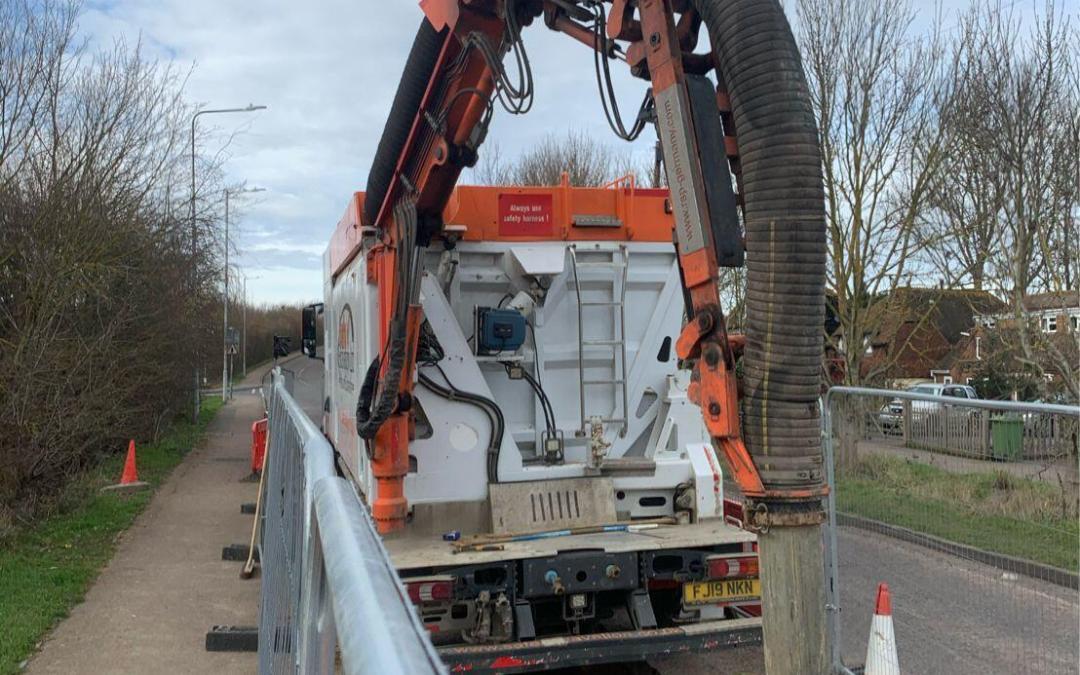Despite Vacuum Excavation is the safest form of excavation, it is not without risks. All areas of the excavation located should be addressed and all the information obtained should be continually used throughout the planning and preparation of the excavation work.
Excavation Safety Method
When beginning an excavation, on-site workers cannot assume that they know where the utility cables and pipes may be. The on-site manager must contact an underground service provider for information, for example, National Grid’s Dial Before You Dig.
You should use all of the available methods in order to locate the services:
- Maps
- Cable avoidance tool (CAT)
- Potholing with hand tools, shovels, and trowels
- Use of the Vacuum Excavation vehicle
All marks to show where the underground services/cables are located need to be exposed and identified with clear markings such as flags or paint. it is of the utmost importance that all on-site workers, apart from the operator, must not be in contact with the Vacuum Excavator to ensure that safety remains paramount throughout the ongoing job.
Hazards in Excavation
- Access / Egress to / From excavation
- Accidents to members of the public
- Contact with underground services and/or overhead powerlines
- Excavation collapse
- Ground water
- Hazardous atmospheres
- Loose rock or soil
- Materials falling onto people working in the excavation
- People being struck by plant
- Surface encumbrances
- Undermining of nearby structures
Risk Assessment for Excavation

If a hazard is identified with an impact on the plant and underground services, there are particular controls in place that need to be actioned. During all the stages of the excavation, a person must at all times, supervise the project and ensure that the workers are given clear instructions on working safely throughout the excavation. The area must be scanned for underground services and a permit is required to excavate before the work commences.
For the security of excavation and the safety of the general public, the excavation area must have 2-meter-high fencing, situated at a safe distance from the work. for maximum security, fence panels should be bolted at all joints to restrict access to authorised staff and contractors only.
Avoiding lone working is of the highest importance to the Safe Excavation team and even though you can hire one operator or two, our team members will never be working on their own on-site, as there will always be a contractor with them. Excavation is a two-man job and despite sometimes working out of hours, our priority is the safety of the on-site team.
If any hazards are discovered before or after the excavation work has begun, it must be registered in the inspection report and contractors need to undertake remedial measures. no exhaust fumes should be near the top of the excavation.
About Safe Excavation
Established in 2016, Safe Excavation assist an array of customers with their Vacuum Excavation requirements such as motorway works, civil engineering, and building and construction projects. It is our aim to continue to promote our service throughout the industry and to provide a safer working environment for all.
Vacuum Excavation is a technique that is also known as Suction Excavation and is the most economical approach that is available today. Hiring a Vacuum Excavator is ideal for construction jobs, both big and small. The on-site operatives are far safer than when using the traditional excavation techniques, such as manual digging and this is a method that offers a much lower risk option for companies.
Read related article:
To enquire about hiring our Vacuum Excavation equipment,
please email info@safeexcavation.co.uk
or alternatively call 01634 505 505.


Recent Comments